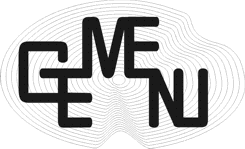
Gerhard Mehrke
Neu-Ulm
Schriftenverzeichnis
|
|
|
Mehrke, G. (1980). Neuronale Induktion des Acetylcholinreceptors bei Muskelzellen in Kultur. Diplomarbeit, Universität Heidelberg. Mehrke, G. (1985). Physiologische und genetische Faktoren bei der Nerv-Muskel Interaktion in Zellkultur. Dissertation, Universität Bielefeld. Mehrke, G. (1991). Elektrophysiologische Untersuchungen zur Funktion des Endothels der Koronargefäße bei der Blutflußregulation. Habilitationsschrift, Technische Universität München. |
|
PublikationenJockusch, H., Mehrke, G. & Füchtbauer, E.-M. (1983). Beating heart muscle in a skeletal muscle bed. Exp. Neurol. 81, 749 - 755. Mehrke, G., Jockusch, H., Faissner, A. & Schachner, M. (1984). Synapse formation and synaptic activity in mammalian nerve-muscle co-culture are not inhibited by antibodies to neural cell adhesion molecule L1. Neurosc. Lett. 44, 235 - 239. Mehrke, G., Jockusch, H. & Schachner, M. 1987. Development of mammalian nerve-muscle synapses in culture: lack of interference by antibodies to the neural cell adhesion molecule N-CAM and its L2/HNK-1 carbohydrate epitope. Neurosc. Lett. 78, 247-252. Daut, J., Mehrke, G., Nees, S. & Newman, W.H. (1987). Passive electrical properties and electrogenic sodium transport of cultured guinea-pig coronary endothelial cells. J. Physiol. 402, 237-254. Mehrke, G., Brinkmeier, H. & Jockusch, H. (1988). The myotonic mouse mutant ADR: electrophysiology of the muscle fiber. Muscle & Nerve 11: 440-446. Daut, J., Maier-Rudolph, W., von Beckerath, N., Mehrke, G., Günther, K., Goedel-Meinen, L. (1990). Hypoxic dilation of coronary arteries is mediated by ATP-sensitive potassium channels. Science 247(4948), 1341-1344. Maier-Rudolph, W., von Beckerath, N., Mehrke, G., Günther, K., Goedel-Meinen, L. & Daut, J. (1990). The role of ATP-sensitive K+ channels in hypoxic dilation of coronary arteries. In: Ionic currents and Ischemia, ed. Vereecke, J. van Bogart, P.P. & Verdonck, F. pp. 253-255. Leuven Univ. Press. Mehrke, G. & Daut, J. (1990). The electrical response of cultured guinea-pig coronary endothelial cells to endothelium-dependent vasodilators. J. Physiol. 430, 251-272. von Beckerath, N., Mehrke, G. & Daut, J. (1990). The role of adenosine in hypoxic dilation of coronary arteries. In: Ionic currents and Ischemia, ed. Verrecke, J., van Bogaert, P.P. & Verdonck, F., pp. 208-210. Leuven Univ. Press. Mehrke, G., Pohl, U. & Daut, J. (1991). Effects of vasoactive agonists on the membrane potential of cultured bovine aortic and guinea-pig coronary endothelial cells. J. Physiol. 439, 277-299. Seiss-Geuder, M., Mehrke, G. & Daut, J. (1992). Sustained hyperpolarization of cultured guinea-pig coronary endothelial cells induced by adenosine. J. Cardiovasc. Pharmacol. 20, Suppl. 12, 97-100. Mehrke, G., Zong, XG., Flockerzi, V & Hofmann, F. (1994). The Ca 2+- channel blocker Ro 40-5967 blocks differently T-type and L-type Ca 2+ channels. J. Pharmacol. Experiment. Therap. 271(3), 1483-1488. Zong, XG, Schreieck, J., Mehrke, G., Welling, A., Schuster, A., Bosse, E., Flockerzi, V. & Hofmann, F. (1995). On the regulation of the expressed L-type calcium channel by cAMP-dependent phosphorylation. Pflügers Arch. 430: 340-347. Bangalore, R., Mehrke, G., Gingrich, K., Hofmann, F. & Kass, R.S. (1996). Charge movement in HEK 293 cells transfected with L-type Ca-channel subunits: evidence for a functional role of the a 2 / d subunit and association of gating charge with transitions between non-conducting states of the channel protein. Am. J. Physiol. 270: H1521-H1528. Mehrke, G. Pereverzev, A., Grabsch, H., Hescheler, J. & Schneider, T. (1997). Receptor-mediated modulation of recombinant neuronal class E calcium channels. FEBS Letters 408, 261-270. Schleithoff, L., Mehrke, G., Reutlinger, B. & Lehmann -Horn, F. (1999). Genomic structure and functional expression of a human a 2/ d calcium channel subunit gene (CACNA2). Genomics, 61(2), 201-209. Shen C., Buck A., Mehrke G., Polat B., Gross H., Bachem M. & Reske S. (2001). Triplex forming oligonucleotide targeted to 3'UTR downregulates the expression of the bcl-2 proto-oncogene in HeLa cells. Nucleic Acids Res. 29(3):622-8. Buck AC., Shen C., Schirrmeister H., Schmid-Kotsas A., Munzert G., Guhlmann A., Mehrke G., Klug N., Gross HJ., Bachem M., Reske S.N. (2002). Liposomal delivery of antisense oligonucleotides for efficient downregulation of Bcl-2 and induction of apoptosis. Cancer Biother. Radiopharm. 17(3):281-9. Shen C., Rattat D., Buck A., Mehrke G., Polat B., Ribbert H., Schirrmeister H., Mahren B., Matuschek C. & Reske S.N. (2003). Targeting bcl-2 by Triplex Forming Oligonucleotide - A Promising Carrier for Gene-Radiotherapy. Cancer Biotherapy and Radiopharmaceuticals 18, 17-26. |
|
Erfahrung und Kreativität
"Sobald man in einer Sache Meister geworden ist,
soll man in einer neuen Schüler werden." -
Gerhart Hauptmann
"Der einzige Weg, der zum Wissen führt, ist Tätigkeit ." -
George Bernard Shaw
"Lernen ist wie Rudern gegen den Strom. Hört man damit auf,
treibt man zurück." -
Laotse
"Zwei Dinge sind unendlich, das Universum und die
menschliche Dummheit, aber bei dem Universum bin ich mir noch nicht
ganz sicher." -
Albert Einstein
"Phantasie ist wichtiger als Wissen, denn Wissen ist
begrenzt." -
Albert Einstein
"Was wir wissen, ist ein Tropfen; was wir nicht wissen, ein
Ozean."
- Isaac Newton
"Wunder stehen nicht im Gegensatz zur Natur, sondern nur im
Gegensatz zu dem, was wir über die Natur wissen." -
St. Augustin
"Wer nichts weiß, muss alles glauben."
Marie von Ebner-Eschenbach
"Erfolg besteht darin, dass man genau die
Fähigkeiten hat, die im Moment gefragt sind."
Henry Ford
